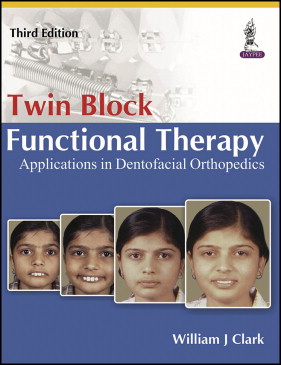
The third edition of Twin Block Functional Therapy: Applications in Dentofacial Orthopedics amazes the reader with its detailed description of clinical procedures and clinical case reports backed up by high-quality illustrations and photographs. Although it is a must-read book for users of Twin-block and functional appliance connoisseurs, its array of topics and straightforward language also make it appropriate for neophytes. There is no question about its uniqueness in the realm of orthodontic literature. The solid experience behind each paragraph and the brilliantly treated patients are already a trademark of the author. This certainly did not disappoint me! The beauty of its illustrations can easily catch our admiration and even serve as a tool for communication with patients.
If I had to make a suggestion for the next edition, I would ask the author to write an entire chapter on human craniofacial growth and development to pair with the chapter on animal experiments. The chapter “Growth response to twin block treatment” provides information based on relevant studies. This is useful to understand growth modification in Twin-block treatment compared with either untreated samples or other functional appliances. However, only articles published between 1965 and 2000 were cited, when, in fact, the highest level of evidence originated from randomized clinical trials published in 2004 and 2009. Considering that the effort to gather the information necessary to write this book must have been tremendous, I believe that the author should not have missed the opportunity to either run or cite at least 1 relevant meta-analysis. Having said this, I must clarify that I did not observe any intention from the author to overvalue the results from Twin-block treatment. All statements were carefully written and in the light of the publications that were cited.
From a clinical standpoint, this book is indeed an invaluable work of art for the clinician interested in getting started with the Twin-block appliance. For those already acquainted with the appliance, it is a nice opportunity to check on the modifications possible with it for treating other types of malocclusions. The results shown are really worth looking at. Orthodontic residents and laboratory technicians can also benefit from the detailed step-by-step tutorials on appliance construction and clinical maneuvers.
Editor’s note: The first printing of the third edition contains an error in the illustrations and captions for figures 28.7 and 28.8. The errors were corrected in later printings.
Stay updated, free dental videos. Join our Telegram channel

VIDEdental - Online dental courses


